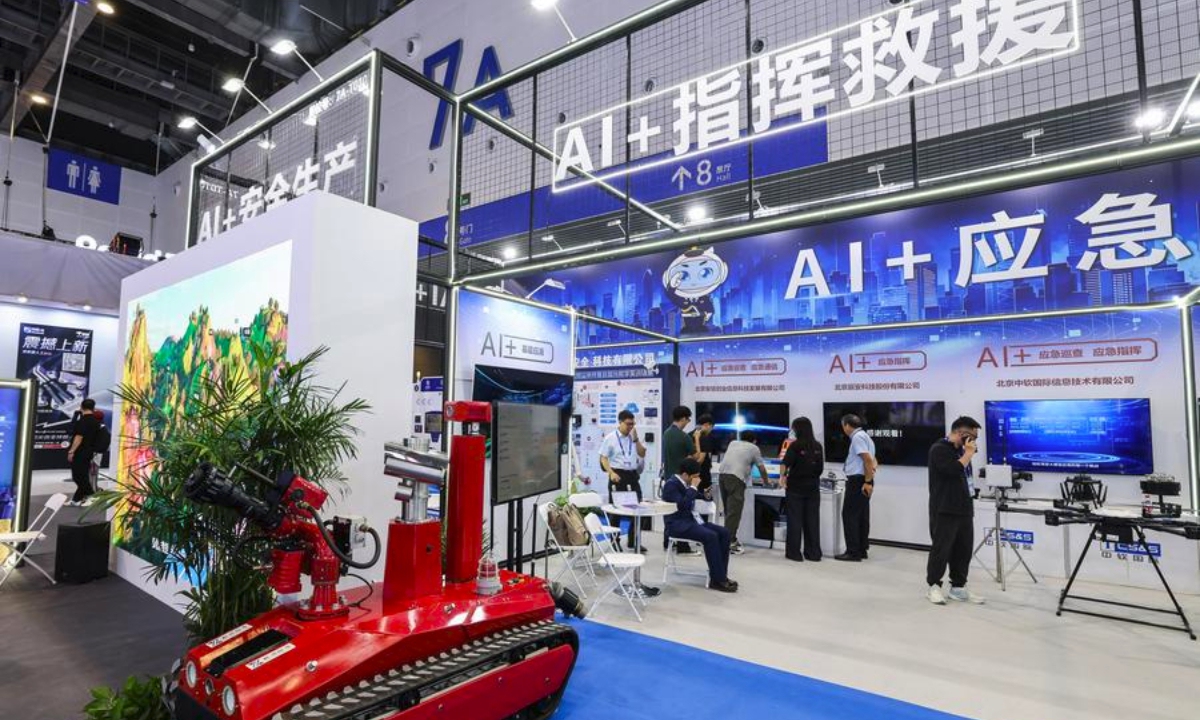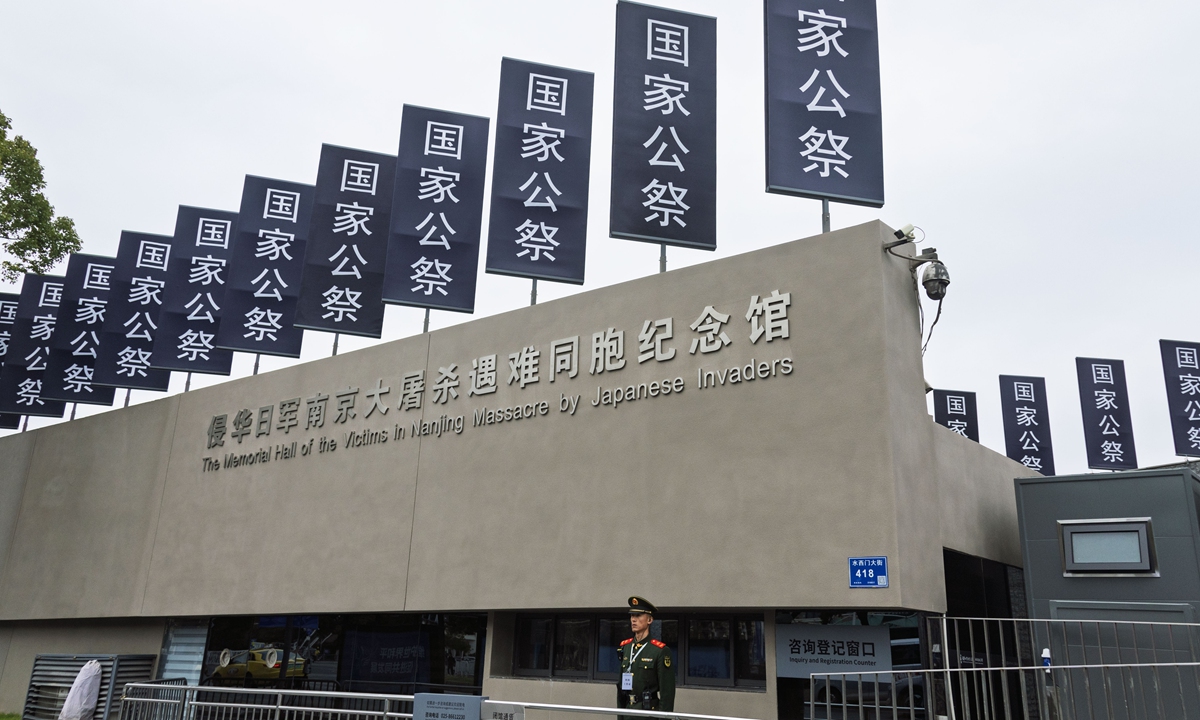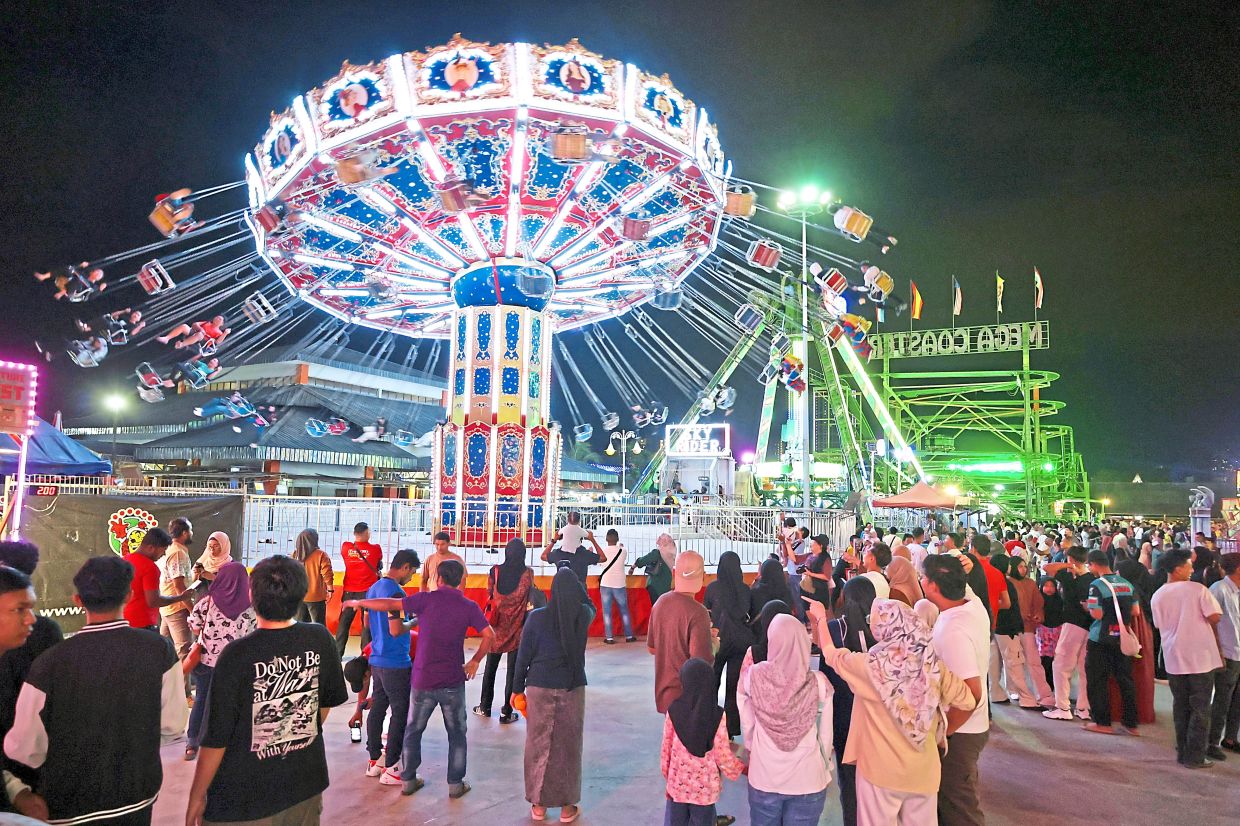People visit the artificial intelligence exhibition zone at the 4th Global Digital Trade Expo in Hangzhou, east China's Zhejiang Province, Sept. 25, 2025. (Xinhua/Xu Yu)
China's
core artificial intelligence (AI) industry scale is expected to exceed
the 1-trillion-yuan ($140 billion) benchmark in 2025, according to
industry data, a trend that experts said highlights the vast potential
of the country's AI development, driven by broader application
scenarios, technological progress and policy support.
According
to the China Academy of Information and Communications Technology
(CAICT), China's core AI industry exceeded 900 billion yuan in 2024, up
24 percent year-on-year, China Media Group reported on Sunday. In 2025,
the figure is expected to surpass 1.2 trillion yuan, with growth
accelerating further, the report said.
Since
the beginning of this year, the application of large-language AI models
in the manufacturing segment has expanded significantly, with the share
of application cases rising from 19.9 percent last year to 25.9
percent, helping drive rapid growth in the overall AI industry,
according to the report.
Multiple
factors have underpinned the fast development of China's AI industry,
among which are broader application scenarios that outpace those of many
countries in terms of market scale and demand, Ma Jihua, a veteran
technology industry analyst, told the Global Times on Sunday, citing
cases spanning the internet, financial services and manufacturing
sectors.
In
addition to the traditional sectors, new scenarios have emerged and are
driving an upgrade of the consumption structure. According to business
big data monitoring, in the first 10 months of this year, China's online
sales of smart wearable devices such as AI glasses and smart watches
grew by 23.1 percent, with smart products playing an important role in
boosting consumption and stimulating economic growth, according to the
CAICT.
Moreover,
technology advancements are taking shape. Pre-trained large-language
models, represented by DeepSeek and others, continue to achieve
breakthroughs, driving AI to evolve from perception to cognition, from
analytical and judgment-based capabilities to generative functions, and
from specialized to general-purpose applications, Ma said, highlighting
the continuous technology advancement of Chinese enterprises in the
field.
According
to a report released by the Chinese Academy of Cyberspace Studies at
the 2025 World Internet Conference Wuzhen Summit in November, China has
become the world's largest holder of AI patents, accounting for 60
percent of the global total.
The
domestic chip industry, a key driver of AI, is also thriving. According
to data from industry analysis firm TrendForce, China's domestic AI
chips surpassed a 50 percent share in Chinese data centers in the fourth
quarter of 2024, the Paper reported, as a new alternative to some
imported chips from the US.
China
has outlined a roadmap for advancing the "AI Plus" initiative.
According to a set of guidelines unveiled by the State Council in
August, China aims to achieve extensive, in-depth integration of AI
across six key sectors by 2027. The core industries of the intelligent
economy will see rapid growth, while AI's role in public governance will
be significantly enhanced, the Xinhua News Agency reported.
By
2030, AI will comprehensively empower China's high-quality development.
The intelligent economy will become a key driver of the country's
economic development. Access to AI technology will be expanded, enabling
more people to benefit from it, the report said.
"AI
is reshaping every industry, from e-commerce and gaming to
communications and manufacturing... Its applications have expanded
dramatically in recent years, especially as AI technologies enter the
automotive, robotics, and agricultural sectors, covering broader domains
and directly promoting advances in cutting-edge industrial
technologies, making AI a strategic focus for national competitiveness,"
Liu Dingding, a Beijing-based internet analyst, told the Global Times
on Sunday.
In
the course of its development, China's greatest advantage in AI lies in
its vast application scenarios and large market, and combined with
supportive policies, this will allow the field's potential to continue
to be unleashed, Liu said.
At
the same time, China maintains an open and cooperative approach in AI
development, Liu said, citing the country's proposal to establish a
World Artificial Intelligence Cooperation Organization, a living example
of sharing growth opportunities with global partners.
 China's core AI industry poised to surpass 1 tln yuan this year, fueled by applications, tech advances and policies: expert
China's core AI industry poised to surpass 1 tln yuan this year, fueled by applications, tech advances and policies: expert
China's core artificial intelligence (AI) industry scale is expected to exceed the 1-trillion-yuan ($140 billion) benchmark in 2025, according to industry data, a trend that experts said highlights the vast potential of the country's AI development, driven by broader application scenarios, technological progress and policy support.









